| Contents [0/4] |
| Tools [1/4] |
| Install IntelliJ IDEA Community Edition. [2/4] |
| Install the code for this class [3/4] |
| Set up your IntelliJ IDEA Project [4/4] |
(Click here for one slide per page)
| Tools [1/4] |
Follow these steps, in order. Try to follow the instructions exactly to minimize any installation issues.
Remove any existing version of Java from your computer.
If you run into problems, please email me or send me a message on Discord. You can also come to my office hours.
If you spend more than 30 minutes trying to figure out a problem with any of these steps, don't waste your time. I will be happy to help.
| Install IntelliJ IDEA Community Edition. [2/4] |
Please install IntelliJ IDEA Community Edition. It has all the features we need for this class, and there's no need to buy a license to use IntelliJ IDEA Ultimate.
NB: DePaul students apparently have access to the Ultimate version, so you can install that if you want. I don't use it.
Use the Standalone installation instructions for your platform:
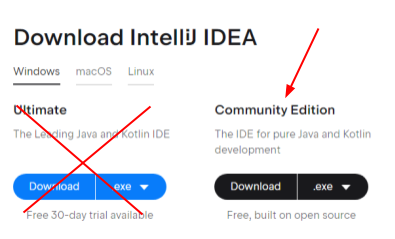
If you already have IntelliJ IDEA on your machine, you should update it by going through the menus. You can access the menus from the Hamburger menu at the top left.
Help -> Check for Updates... and then follow the prompts.
IntelliJ IDEA (top left) -> Check for Updates... and then follow the prompts.
| Install the code for this class [3/4] |
src and a file named pom.xml.
| Set up your IntelliJ IDEA Project [4/4] |
Start up IntelliJ IDEA. Click the Open tile.
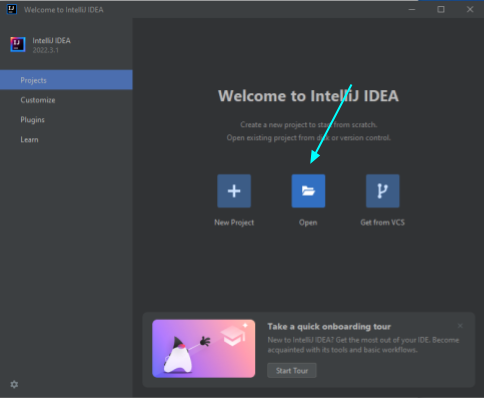
Navigate to the ds1-idea directory where you unzipped the course code archive and Click OK. The directory you select should be the one that contains the src directory and the pom.xml file.
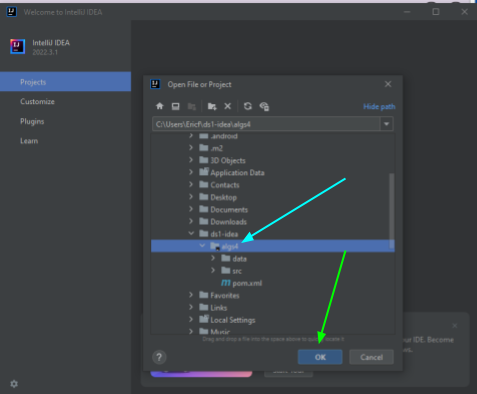
When the project opens, navigate to src/main/java/ds1.student in the Project pane on the left. Open up Hello. There should be a message just under the filename in the center of the editing pane saying the Project SDK is not defined. Click Setup SDK on the right.

Click Download JDK.
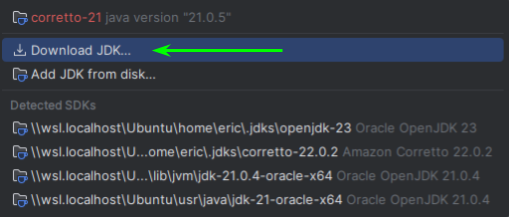
Select JDK Version 21 and Vendor Amazon Coretto 21.0.5. Click Download. The JDK will install.

Right-click the Hello class in the main editing window. Click Run Hello.main() in the context menu. You should see the Hello, world! output in the console window on the lower pane. If you get this far, you have successfully setup your programming environment.

One final step: In IntelliJ IDEA go to the Hamburger menu on the top left and choose File -> Settings (on Windows/Linux) or IntelliJ IDEA -> Settings (on a Mac) and change your tab settings as follows. This will help with code formatting when I look at your code. Pro tip: Most programmers I hang out with can't stand tabs! It's a pretty standard practice to use the tab key and have your editor replace tabs with spaces.
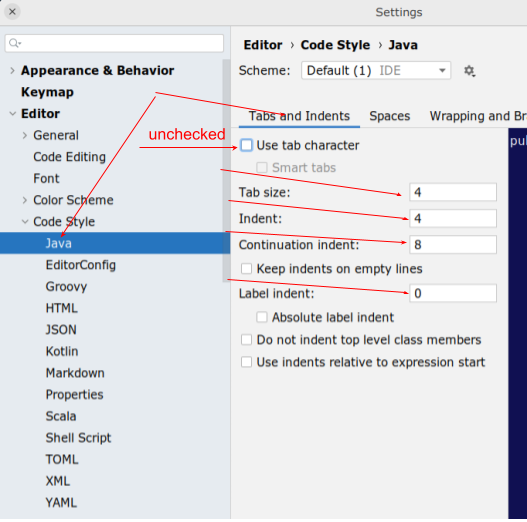
If you have problems, send a message in the #general channel in the Discord server. Your classmates or I will help you.